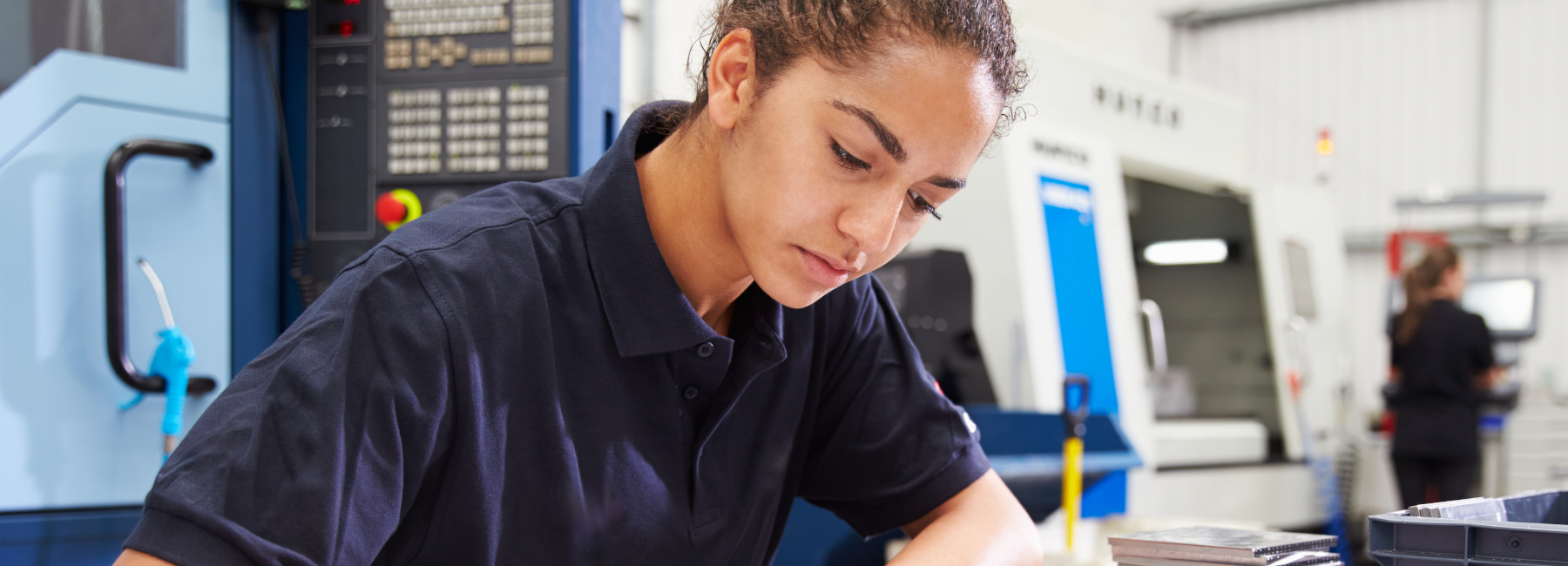
Using apprenticeships as CPD for your existing staff
How can apprenticeships be used for those businesses who are not in a position to take on additional staff?
The future at present is hard to predict. The employers we work with in the engineering and manufacturing sector are beginning to take stock and work out how to move forward. Each finds themselves in a unique place; some who are continuing to take on new apprentices whilst others not considering it as they return to production and get a sense of what their future will look like post Covid-19 lockdown.
This goes for businesses of all sizes. Those who pay the Apprenticeship Levy are still adding funds to their pot each month. Some will be in a position where they can take on staff however others may find themselves in a position where they cannot maintain or increase their wage bill and therefore cannot take on new apprentices (even though they are still paying into their Levy Pot). In fact, the government has said ‘if you already pay the apprenticeship levy, you’ll need to continue reporting and paying it until the end of the tax year even if your annual pay bill turns out to be less than £3 million’.
The Prime Minister has hinted that apprenticeships may be something included in the government’s recovery strategy however we wait to see if there is any substance behind the statement.
How can apprenticeships be used for those businesses who are not in a position to take on additional staff?
Apprenticeships for existing staff
Apprenticeships are not just for bringing new talent into your business, they can also be a brilliant and cost effective way to up-skill your existing staff team. An apprenticeship can be started at any age and be completed by someone who is already in post. There are certain criteria in relation to prior learning that would need to be considered however with a range of apprenticeship levels there is often something for everyone.
Apprenticeships are not just for bringing new talent into your business, they can also be a brilliant and cost effective way to up-skill your existing staff team. An apprenticeship can be started at any age and be completed by someone who is already in post. There are certain criteria in relation to prior learning that would need to be considered however with a range of apprenticeship levels there is often something for everyone.
Businesses who pay the Apprenticeship Levy can use it to fund the apprenticeship without incurring any additional staff costs. Those who don’t can co-invest and pay just 5% of the training fee whilst a business with under 50 employees can access funding for the whole apprenticeship training cost. Again, no extra wage costs as the person completing the apprenticeship is already a member of staff.
So what’s available?
Apprenticeship levels run from intermediate (level 2) through to degree (level 7). I’ve focussed on two ‘higher’ level 4 apprenticeships designed for people who have already completed a level 3 apprenticeship or have A levels or a BTEC L3 or NVQ L3.
Apprenticeship levels run from intermediate (level 2) through to degree (level 7). I’ve focussed on two ‘higher’ level 4 apprenticeships designed for people who have already completed a level 3 apprenticeship or have A levels or a BTEC L3 or NVQ L3.
Engineering Manufacturing Technician (42 months in length)
This occupation is found in large and small engineering and manufacturing organisations providing products and services throughout a wide range of sectors. The person will support organisations to develop, produce or test new/existing products, processes, or procedures to efficiently and effectively meet a customer specification in terms of quality, cost and delivery. Make decisions, solve problems and produce and/or update technical documentation, reports or specifications. Inform others, either internally or externally as to what needs to be done and how a product must be designed, manufactured, tested, modified, maintained, stored, transported, commissioned or decommissioned. More detail here >
Process Leader (24 months in length)
Process Leaders are found in organisations with high volume manufacturing or advanced manufacturing processes in which large volumes of products are made in assembly, moulding, metal processing, chemical processing, pharmaceutical, textiles, food and drink, or similar processes. The person will undertake and direct production activities and operations and deliver against core production KPIs. Effectively lead and manage teams, providing technical/specialist input and direction to direct reports and others. They will be responsible for determining and managing budgets and resources using core production KPIs as the basis of the continuous improvement cycle and undertake and manage quality resolutions. More details here >
More information
There is lots of information out there about apprenticeships however the best way to find out how you might use apprenticeships to offer your existing staff CPD is to get in touch. We can then offer you advice specific to your situation. Get in touch here >
There is lots of information out there about apprenticeships however the best way to find out how you might use apprenticeships to offer your existing staff CPD is to get in touch. We can then offer you advice specific to your situation. Get in touch here >
Also read…
Our blog on finding the right Training Provider >
Our blog on the apprenticeship levy >
Our top 10 Q&As for Employers >
Our blog on finding the right Training Provider >
Our blog on the apprenticeship levy >
Our top 10 Q&As for Employers >
